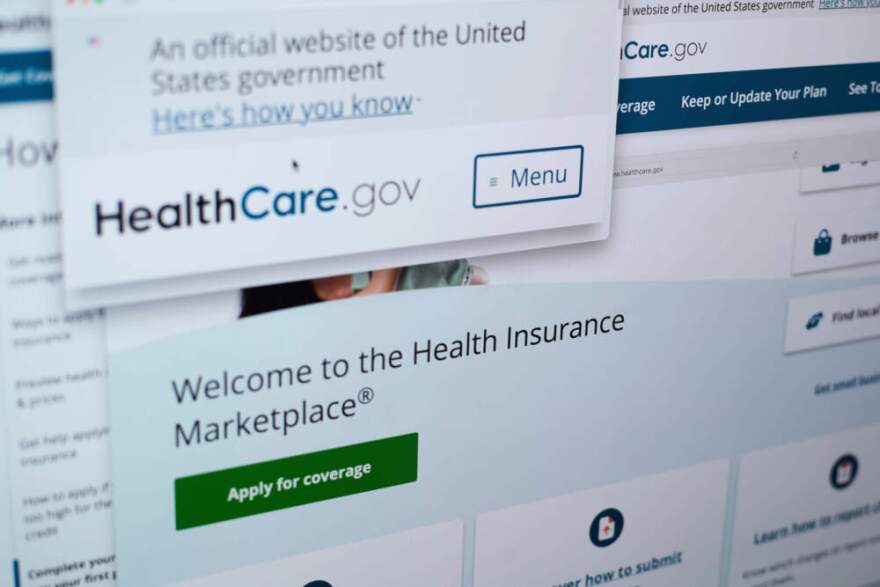
Open enrollment for Affordable Care Act health insurance plans begins in less than two weeks, and consumers are already facing significantly higher premiums because tax credits are set to expire at the end of the year, and Democrats and Republicans are at odds over whether to renew them.
“Tens of millions of Americans are receiving notices as we speak indicating that their health insurance premiums, copays and deductibles are about to skyrocket, double, triple, or in some cases quadruple at levels that will be unaffordable,” House Minority Leader Hakeem Jeffries said on NPR’s Morning Edition Tuesday.
The debate over health care subsidies led to the government shutdown, after Democrats were unable to get Republicans to include an extension of the subsidies in a government funding bill.
Thoe price hikes are expected to impact the more than 24 million people enrolled in Affordable Care Act marketplaces. Cynthia Cox, vice president at KFF, an independent health policy research, polling and news organization, said that the expiration of tax credits on Affordable Care Act marketplaces will cause these price increases.
“People are getting less financial help next year than they get this year,” Cox said. “When they log on to shop, they’re seeing much higher monthly premium costs for themselves.”
4 questions with Cynthia Cox
While more people than ever before are enrolled in the Affordable Care Act, marketplaces and federal subsidies have a lot to do with that. Who will these cuts hurt the most?
“We are seeing record-high enrollment in this market now. It has grown from about 11 or 12 million to over 24 million people signing up. And most of that growth that we’ve seen in the last few years with these enhanced premium tax credits has actually been concentrated in southern red states.
“That’s because a lot of these states did not expand Medicaid. They had a really high uninsured rate, and when these enhanced premium tax credits came along. It made that coverage much more affordable. And so we see a lot of very low-income people signing up in these southern red states in particular, they’re likely to be the ones who would be most affected.
“A lot of these folks are small business owners or work at a small company, and that’s why they don’t get health insurance through work. And also, we see farmers and ranchers rely on this coverage, too. It’s likely a lot of Republican voters are gonna be affected by the premium increases.”
So, will this impact people across income levels and even senior citizens?
“When you look at who might have to pay the steepest premium increases, it’s actually middle-income seniors, or maybe not quite senior, maybe someone who’s in their early 60s and not quite eligible for Medicare.
“The reason for that is because if you’re middle-income income making just above four times the poverty level, you’re going to lose any financial help. And so, if you’re older, your premiums are already very high. So, if there’s an older couple who makes just enough money that they wouldn’t get a tax credit anymore, so maybe $85,000 for a couple, they could actually see their premium cost go up by more than $20,000.”
As premiums get more expensive, fewer people will be able to afford health insurance, and they’ll presumably drop out of these marketplaces. So there’ll be a smaller pool, right? What will be the broader impact?
“If these enhanced premium tax credits expire, the Congressional Budget Office is expecting that there will be about 4 million more people who are uninsured.
“It’s important to keep in mind this is also coming at the same time that some other major changes to health programs have been passed in the summer that would lead to maybe 10 million people being uninsured. So when you combine that effect, that’s a really steep increase in the uninsured rate.
“Hospitals in particular are concerned about this because if somebody shows up in an emergency room who’s uninsured, the hospital still has to treat and stabilize them. And if that person cannot pay, then the hospital eats the cost.
“That can have ripple effects for other people, too. It might mean that a hospital in your area closes or shuts down their maternity ward or makes other changes to their services if they’re struggling financially.”
If Democrats and Republicans could come to a deal tomorrow to preserve these subsidies, is it too late for premium increases for next year?
“It’s not too late. So, the issue here is that there’s really just some programmatic changes that would need to happen on a website after Congress passes an extension, if that’s what they decide to do. So, I think you would probably need a few days to make those changes on the website, but it can be done almost like a flip of a switch.
“There’s been some other talk about whether insurance companies should have to go back and negotiate different premiums, but I think the really important thing to understand here is that this is not what the insurance company is charging. It’s a formula set by Congress that determines how much these people pay each month.
“Congress can make that change. They don’t need insurance companies to change how much they’re charging. It’s how much of a tax credit Congress passes for these folks who are buying their own insurance. That’s what matters to the people who are getting a subsidy when it comes to how much they’re paying.”
This interview was edited for clarity.
____
James Perkins Mastromarino produced and edited this interview for broadcast with Michael Scotto. Grace Griffin produced it for the web.
This article was originally published on WBUR.org.
Copyright 2025 WBUR
